Jaipur: Jaipur metro mein manaein koi bhi utsav, aakarshak daron par sanjoyein apne yaadgar pal — Celebrate your precious moments in Jaipur Metro at attractive prices. You may think it’s a typo in a hoarding advertisement meant for a restaurant. Except it is not. It is a desperate call by a desperate Jaipur Metro that’s struggling to stay relevant.
In 2015, when services started in Jaipur, the metro was like a jewel in the crown of the heritage city. Nearly two decades ago, the policymakers made a big case for it, saying the people needed it, just like the people living in India’s power centre Delhi did. But a decade into existence, the rapid transport system connects barely 12 km of distance between Mansarovar to Badi Chaupad with an average daily ridership of 50,000. The population it is catering? Around 4 million. And it is not expanding. Subletting moving trains for birthday party celebrations was its most novel idea of justifying the mass transit system. But it’s been three years since the music inside the coaches died. The Jaipur Metro, a status symbol for the residents when inaugurated, is bleeding heavy financial losses today and has seen more than 12 chiefs in a span of nine years.
And it’s not just Jaipur, many tier 2 cities are flooded with metro projects today that promise to be a symbol of development. Agra is the newest addition to become India’s 21st metro city. Over the years, Modi has become the brand ambassador of all metro projects — from laying stone to flagging off trains. Recently, he inaugurated the country’s first underwater metro in Kolkata. But city planners and urban experts say small cities don’t really need this metro obsession. India’s Tier-2 and Tier-3 cities are not completely urban and most are not particularly dense, which means metro lines are not within walking distance for most commuters.
“Small cities do not need this but it is being forcefully brought there also. It only works where population density is very high and how much people travel in the city,” says Madhav Raman, architect and co-founder of Delhi-based Anagram Architects.
A Parliamentary Standing Committee report on housing and urban affairs in 2022 pointed out that almost all metro networks are in losses and don’t have enough ridership. Still, new projects are being launched. The report says that 45 per cent of the ministry’s budget is earmarked for metros. The metro railway was not required in Jaipur till 2025, according to a 2018 Comptroller and Auditor General (CAG) report.
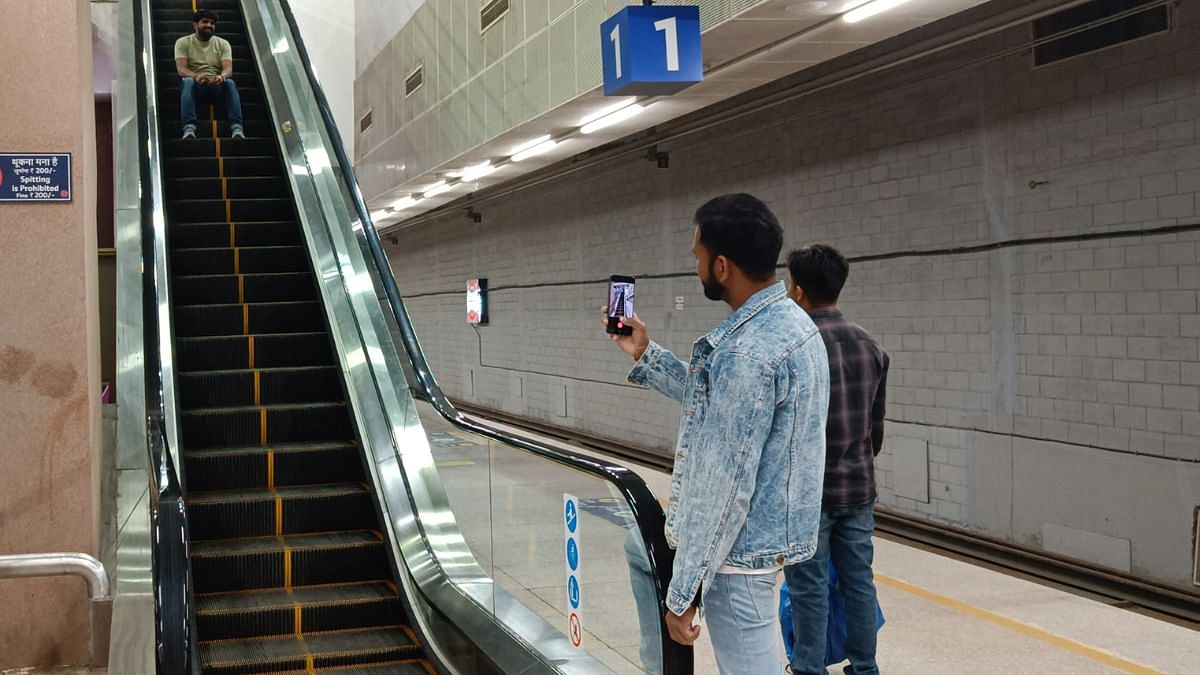
Also read: ‘Yams over grenades’ in Assam. Samir Bordoloi & his green commandos make farming cool again
Makings sense of Jaipur Metro
“The government’s focus is on making small cities the axis of self-reliant India and the Metro project at Agra reflects this intention,” said PM Modi at the inauguration of Agra Metro’s work.
Union Housing and Urban Affairs Minister Hardeep Singh Puri echoing PM vision at the 16th Urban Mobility India (UMI) Conference cum Expo 2023, said that rapid urbanisation has been embraced as an opportunity rather than a challenge and declared that India will soon surpass USA’s metro rail network.
But Jaipur Metro’s ridership data raises the fundamental question whether India’s small cities need this expensive piece of infrastructure. Till 2014, the country had a 229 km metro rail network that expanded to 870 km by April 2023.
Metros have become the dams of modern India for politicians to promise the voters. It’s a swanky piece of infrastructure that adds prestige to the citizens of a small town. And politicians seem to have understood this psychology well. It easily becomes the biggest achievement on their report card, something they can claim to be “word-class” even if they don’t make any real impact on the local economy.
Small cities do not need Metros but it is being forcefully brought there. It only works where population density is very high
— Madhav Raman, architect and co-founder of Delhi-based Anagram Architects.
Those running Jaipur Metro pitch the service as a welfare measure in their defence.
“We are a service provider, not an earning organisation. As a service sector, loss is inevitable but we started many initiatives to enhance our revenue system and compensate for the loss such as providing advertisement spaces to the private players,” says Sharad Kumar, Public Relation Officer of Jaipur Metro Rail Corporation (JMRC).
And Metro projects have a nod across political parties.
On 1 March, Rajasthan CM Bhajanlal Sharma called a review meeting with senior officials of Jaipur Metro and announced its new phase from Sitapura to Ambabari. “The CM wants to develop the city metro as a model for the country, connecting most traffic-heavy areas of Jaipur,” says a senior JMRC official present in that meeting, on condition of anonymity. It’s also part of the recently elected CM’s 100-day action plan. Renaming the JMRC as Rajasthan Metro Rail Corporation, the government plans to extend services to other cities such as Jodhpur and Kota, ThePrint has learnt.
But OP Agarwal, ex-IAS and former CEO of World Resources Institute admits that no metro system can make a profit. “It’s only positive aspect is the environmental benefits. It reduces safety concerns, air pollution, it’s all about public benefits. For public transportation, profitability is not an objective.”
Recently, an Economist article titled Why are Indians shunning the country’s shiny new metro lines? raises questions on India’s planning of the mass transit system.
For the Modi government, the growing metro rail network reflects the evolving aspirations of a young India that is rapidly urbanising. “With the continual expansion of our cities, and the realisation of greater first-mile and last-mile connectivity, India’s metro systems will witness higher ridership. It has been planned and operationalised to service the traffic requirement of India’s urban areas for the next 100 years,” says a government statement that rejected the Economist article.
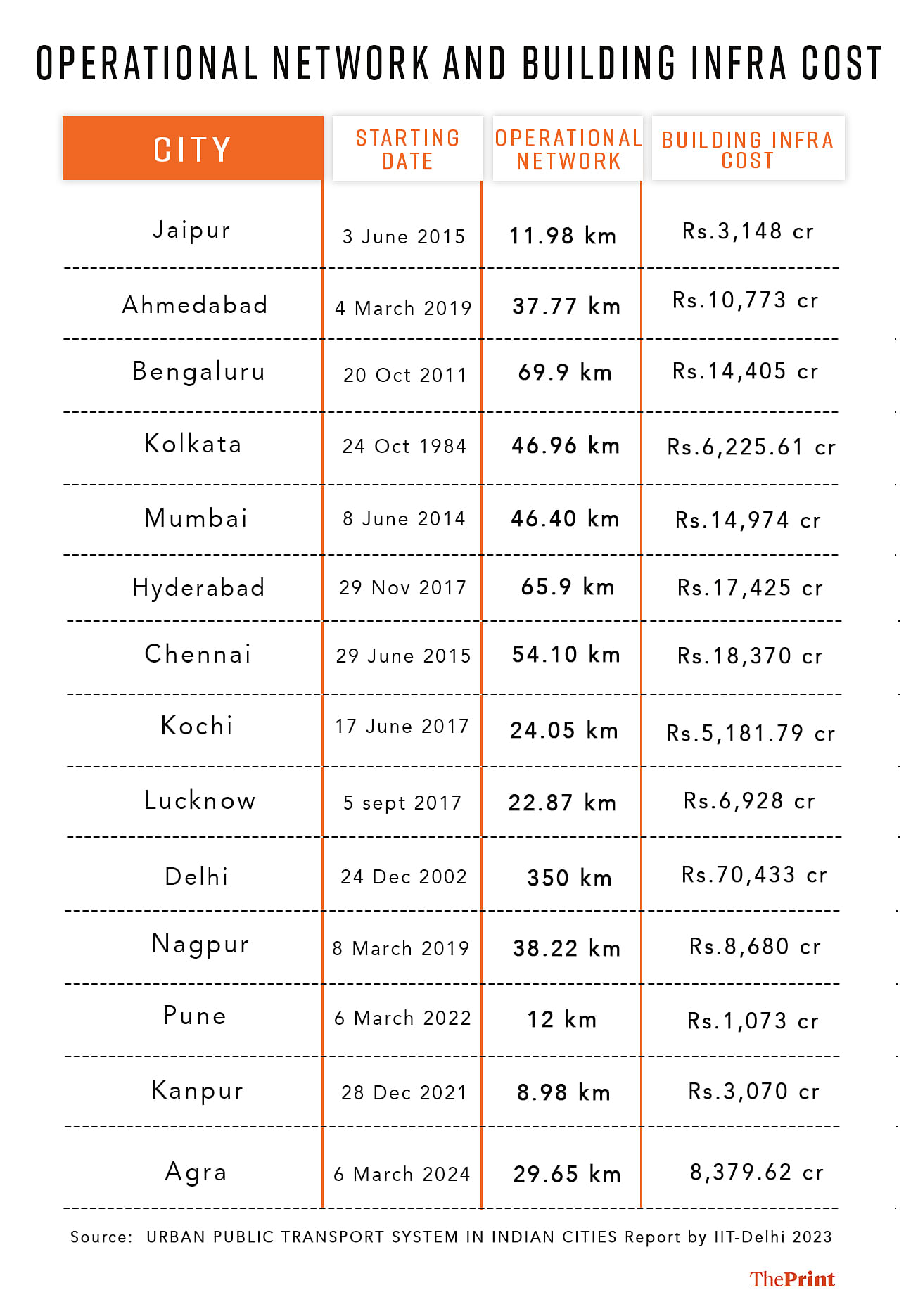
Also read: ‘Chandni Chowk, but with AC’ — Omaxe mall is the hot new thing in Old Delhi
The missing last mile
Lalit Goel, who is in his forties, runs a jewellery shop near Jaipur’s Hawa Mahal. He reached here by metro from Mansarovar, nearly 12 km from his shop. But his daily commute was quite a task: he first had to take an e-rickshaw from his home to reach the metro station.
“This route does not require a metro. It does not connect the whole city. Jaipur’s main traffic is on Tonk Road, which is not connected by the metro yet,” says Goel.
At a time when most Indian cities are rushing to find themselves on the metro map, urban planners and city experts say India is riding the wrong horse and the country needs to strengthen its alternate transport service such as buses. According to them, it’s a question of misplaced priorities — choosing to invest in a ‘white elephant’ instead of boosting the local public infrastructure.
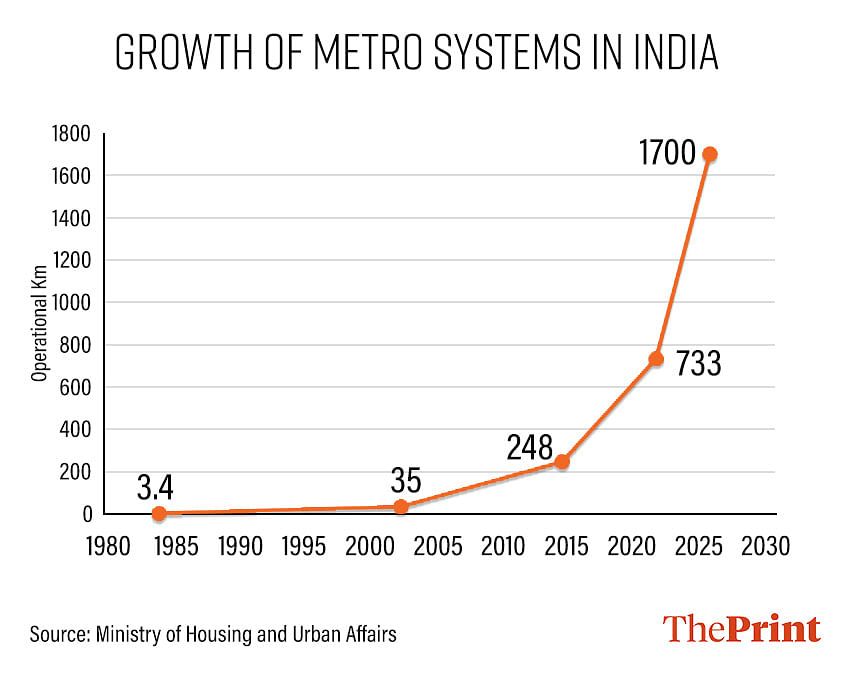
“Bus is better for small cities, not metros. Metros do not provide the last mile connectivity to the people. But the metro came with a status symbol which buses do not provide. It brings the class distinction. We should push for the premium buses,” says OP Agarwal, ex-IAS and former CEO of World Resources Institute (WRI).
The Central government released Rs 98,547.15 crore in the last 5 years from 2018-19 to 2022-23 for the various metro projects across Indian cities.
In February, Balmukund Acharya, BJP MLA from Hawamahal assembly seat, pointed out the problems faced by people while traveling by metro. Although he says Jaipur does need the metro, pointing out there is a lack of awareness among the people about the transportation system.
“There is a need to connect the entire city with the metro. And the metro authorities should make a plan on why fewer people are traveling now. The planning was done wrong in the beginning,” he says, adding that Jaipur city has expanded by 50 km.
There is a common quest among Jaipur residents that the route chosen during the first phase was wrong as there are not enough passengers on this route and also the metro runs in a serpentine manner. Due to various factors, it takes 35-40 minutes to travel 12 km and the frequency too is low. Some of the areas the train passes — Ram Nagar and Shyam Nagar — are not densely populated. According to a former employee of Jaipur Metro, the least number of tickets are sold at these stations during the day. There are neither big hospitals, nor big colleges or big coaching centers on this route.
At a time when most Indian cities are rushing to find themselves on the metro map, urban planners and city experts say India is riding the wrong horse and the country needs to strengthen its alternate transport service such as buses. According to them, it’s a question of misplaced priorities
“The road-based system is the basic system, for long trips the metro is an attractive option but if it’s not integrated and all the money going for creating the metro system, then it’s a construction project not a public transport project,” says Geetam Tiwari, an IIT-Delhi professor.
Urban experts say that cheaper modes of transport are available and the government should focus on it. “Having a metro in the city looks nice and glamorous but buses are a far better option, more friendly and cheaper. Metros are costly affairs and not a solution for reducing traffic as it is very expensive,” says Vidyadhar Date, author of Traffic in the Era of Climate Change and convenor of Aamchi Mumbai, Aamchi BEST.
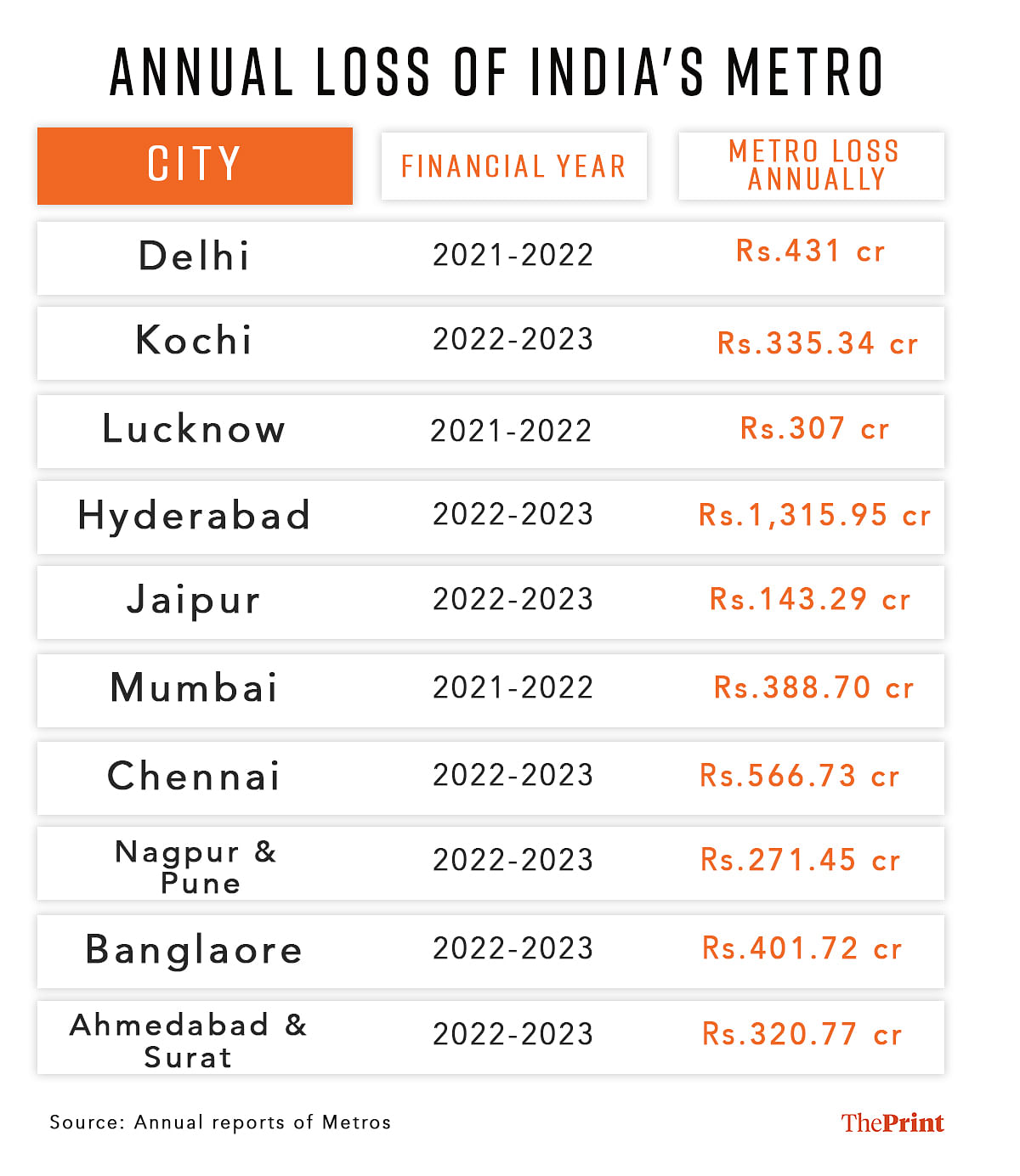
Also read: 10 dirtiest cities are in ‘waste Bengal’. Kolkata to Kalyani, people clip noses, accept it
The politics of Jaipur Metro
In Jaipur, it all started in 2003 when Congress promised metro rail in its election manifesto. But it wasn’t before 2010 when Ashok Gehlot laid the foundation stone of his pet project. Over the years, the metro has been part of the political party’s manifesto from Goa to Madhya Pradesh.
In 2015, BJP’s Vasundhara Raje inaugurated the first train between Mansarovar to Chandpole and called it a historic day. Jaipur became the fifth city in the country after Kolkata, Delhi, Bangalore, Gurugram and Mumbai to have a metro and the only metro services owned by the state government.
There was palpable enthusiasm among the people at that time and a long queues were seen outside metro stations. Interestingly, when Raje was in opposition, she called the metro project a waste of public money and a loss-making venture.
But now even opposition parties are not opposed to the metro projects. It’s loved by all.
Former Urban Development Minister of Rajasthan, Shanti Dhariwal says that when we (the Congress government) was building the metro, BJP was opposing it. When we were in the government, the central government was not helping us and when we asked for help, it wanted to install its MD in the metro by giving 20 per cent money, says Dhariwal.
“Public transport always runs at a loss. The government bears these expenses. Profit is not earned from this,” he says, adding that after Jaipur, our plan was to build a metro in Jodhpur and Kota.
Metro rail system is a revolution in the public transportation of urban India.
It has many value-added advantages to the public like safe, faster,
reliable, eco-friendly, energy saver
–U.J.M Rao, Managing Director, Andhra Pradesh Metro Rail Corporation Limited
Experts point out at the indirect gains that the metro system gives. “Metro rail system is a revolution in the public transportation of urban India. It has many value-added advantages to the public like safe, faster, reliable, eco-friendly, energy saver,” says U. J. M Rao, Managing Director, Andhra Pradesh Metro Rail Corporation Limited.
Also read: Indians are starting a love affair with South Korean universities. K-pop is the gateway
Ridership and losses
Building metro infrastructure across the small cities has captured India’s urban imagination in the past decade or so. In early 2000s, every city was rushing to build malls. Soon, it was the metro dream that was being chased.
Delhi metro which started in 2002 became a big symbol for the new urban aspiration for the cities like Kanpur, Lucknow, Patna, Jaipur, Bhopal. It held the promise of the new middle-class urbanity that has escaped Indian cities for long.
In 2018 Sheila Dikshit recalled her conversation with Atal Bihari Vajpayee over the Delhi metro and said he said one sentence to me: please implement it immediately. When in December 2002, city metro launched between Shahdara and Tis Hazari he was the first person to buy a ticket. “Delhi had seen a dream for years, today that dream is coming true. Metro was a big need of Delhi. The increasing population of Delhi is demanding basic facilities, said Vajpayee in his familiar poetic style.
However, Delhi metro also became a political issue at that time. Former Delhi CM Sahib Singh Verma rejected the claims made by Sheila Dikshit that the Delhi Metro Rail Corporation is her government’s baby.
But ridership data says most metros are white elephants and beyond the prestige quotient, don’t really hold much for the citizens whose daily commute remains a struggle.
According to the recent IIT-Delhi study, ridership on all metro rail networks in India is less than 50 per cent of their projected ridership. And the cost of public transport also influences choice of mode. “Most Indians work in the unorganised sector and prefer to work in 5-7 km range. And for that, they don’t use metros,” says Tikender Pawar, former Deputy Mayor of Shimla and member of the Kerala Urban Commission, adding that in Indian Tier-2 and Tier-3 cities, the average commute is short and people prefer personal vehicles.
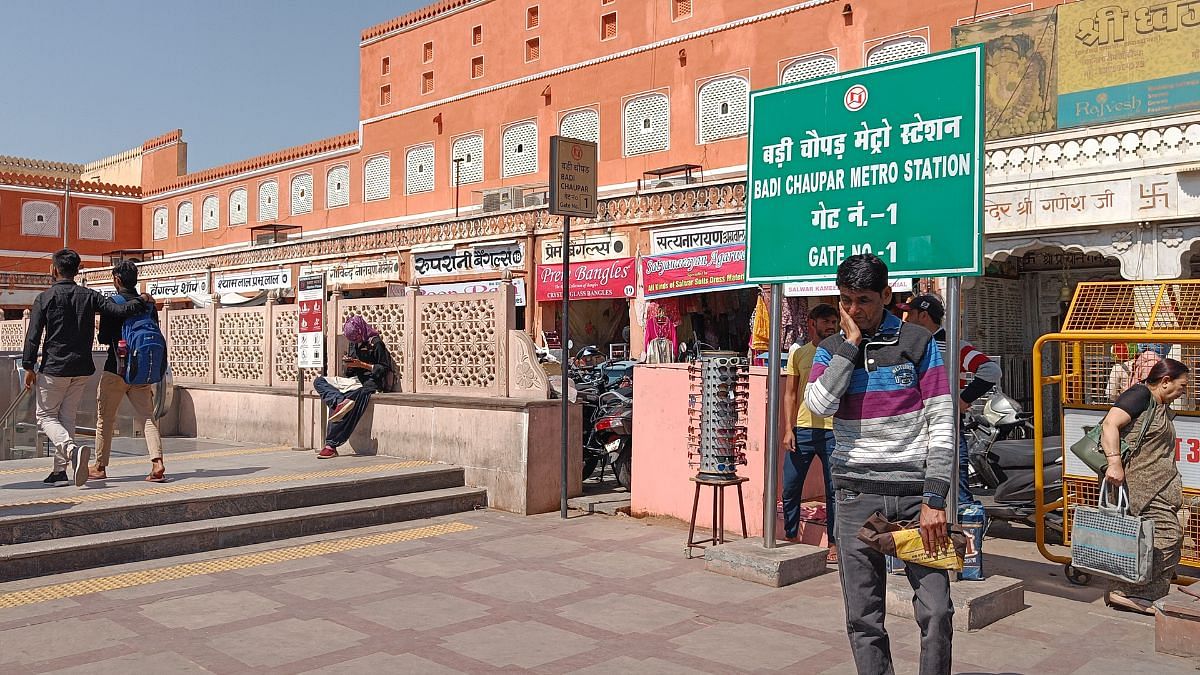
Delhi which has a population of around three crore still has an average metro ridership of 65 lakh. It’s DMRC that provides consultancy to Jaipur metro. “In Delhi too, ridership was low earlier but as the metro network expanded in the city, ridership also increased. Same thing will happen in other cities also. Metro expansion will attract people,” says a senior official of DMRC on the condition of anonymity.
For instance, JMRC’s annual report 2022-23 states that it incurred heavy operational losses due to low ridership and the net losses stood at Rs 14,329.51 crore against the Rs 8,324.27 crore in the previous year. “The average ridership is 50,000 per day and during 2023-24, 1.72 crore people travelled which makes 24 crore rupees. However, we have expected more passengers as per our detailed project report (DPR),” says Sharad Kumar.
Also read: Bengaluru museum is making science artsy, buzzy. And it won’t stop changing
Adoption of metro stations
Jaipur’s Sindhi Camp is one of the most congested areas of Jaipur. Buses stand in que and conductors keep calling passengers. 28-year-old Amit Shandilya with her five-year-old daughter gets down from one of the buses that has just come from Khatu Shyam. The duo board the lift from Metro premises that takes them to the platforms. The metro station, entirely painted in yellow, was adopted by Utkarsh Classes in January 2022.
Utkarsh Classes has secured the station naming and station branding rights of the Jaipur Sindhi Camp Metro Station in 2022. Jaipur metro also focuses on non-ticket fares for generating revenue such as by giving space on renting space. However, there are very few outlets at Jaipur metro stations.
After Sindhi Camp, the JMRC gave branding rights for two more stations: Mansarovar and Railway Station.
Utkarsh Coaching Institute, started in 2002, first adopted the station policy of Jaipur Metro, says, “We wanted to promote our coaching and at that time we came to know about this initiative of Jaipur Metro. We tried for this and we got the branding rights. This was a different medium of publicity through which we could connect with thousands of people a day,” said an official working in the management of coaching in Jaipur.
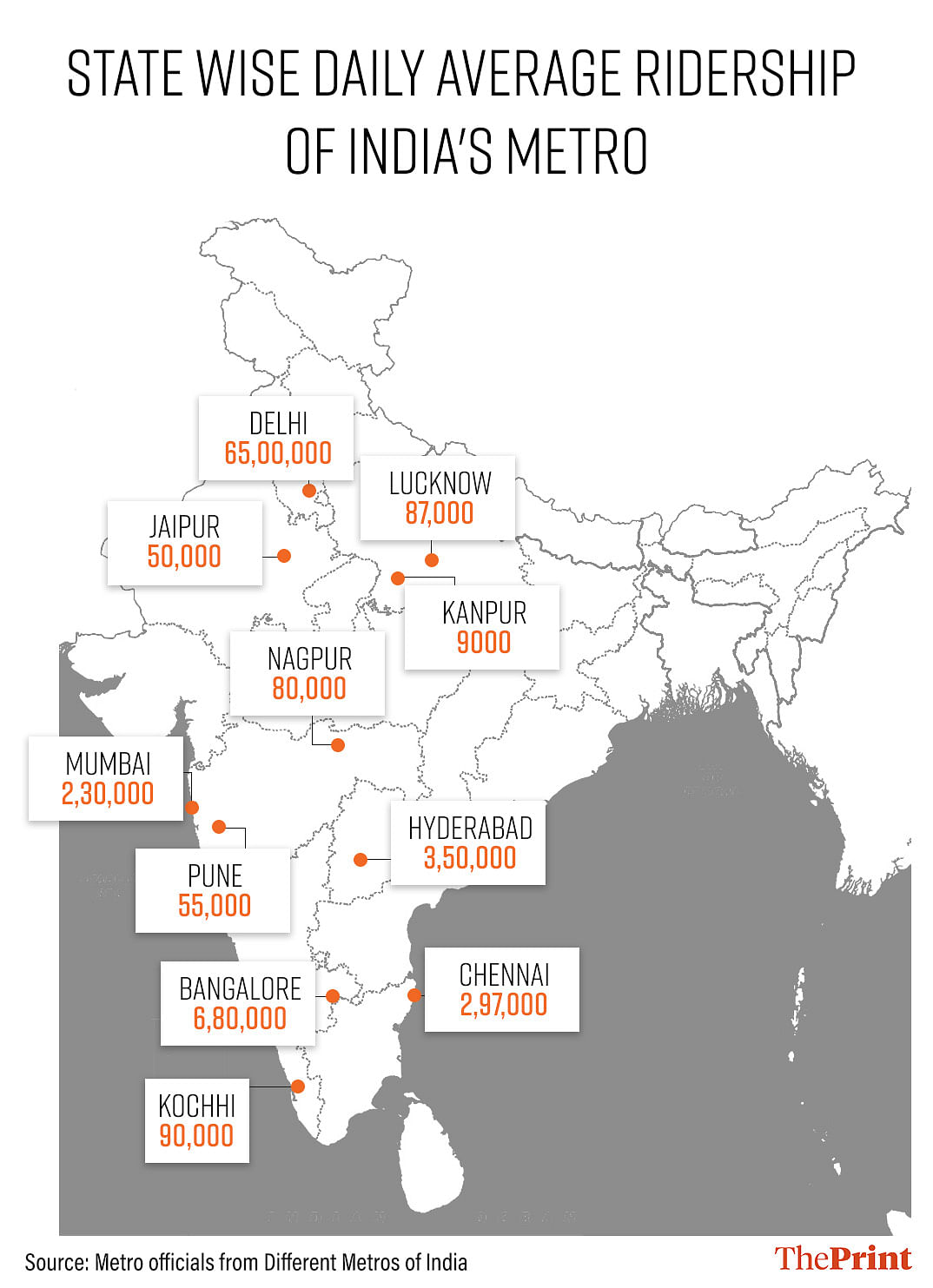
In the 2021-22 Union budget, the government announced an allocation of Rs 18,000 crore to support the augmentation of public bus transport services. However, in an RTI response dated May 2022, it was revealed that no funds had been sanctioned or utilised for the scheme during FY22.
Raman says that by building a metro, it is says that the areas are no longer rural and it’s more like an aspiration thing, which is used for the election purpose in our country. “Finance is a very big issue for metros and Tier-2 and Tier-3 cities are not engaged with much economic activity yet. Metros have become an image project not a transport project,” he says.
Small towns hold a romantic idea of Metro. They treat it as a pie of the big city life that also exists in their own backyard. A couple from Rajasthan that celebrated their 25th marriage anniversary inside a moving Jaipur Metro train with all their relatives recalls the day. “We wanted to do something different and even the Jaipur Metro was also experimenting with a novel idea,” says Vijay Kumar, 52, a local businessman.
Jaipur Metro has become an experiment whose results are awaited.
The couple says that there could not have been a better place to celebrate 25 years. “We had seen shooting in the metro in films but we never thought even our life would be shot in the metro. We had never imagined this in our dreams,” he says.
(Edited by Anurag Chaubey)


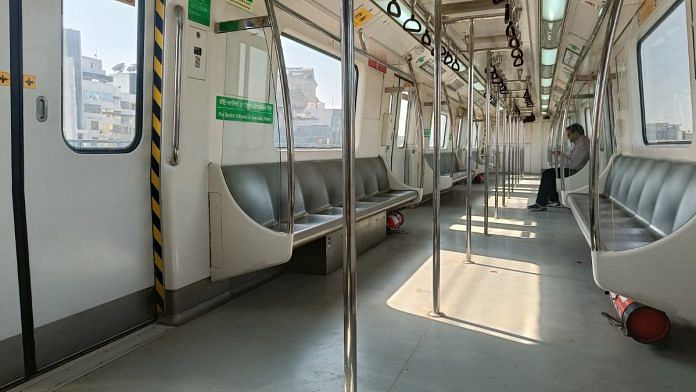

In yearly losses of metro,
How come surat has loss when currently metro is being built. There is error in it. I think only ahmedabad has loss, not surat.
Very large sums are being invested in the Metro and other components of Bombay’s infrastructure. Sincerely hope they will prove to be sound investments.
First CMD of Jaipur Metro was Nihal Chand Goel. Out of all candidates selected by him, Reshma Khan, d/o RPSC Chairman Habib Khan Goran (accused of Rajasthan Judicial Service Exam paper leak) was appointed as Legal Manager out of hundreds of candidates after oral interview (she soon left to become a Judge). This is not related to above news article, the girl must have been extremely hardworking, but in media all sort of reports were published. Similarly, route of Jaipur metro is such that it is of no use to commoners and this is probably due to involvement of high profile people as metro route affects land prices and value of property. Currently Jaipur Metro is a white elephant which neither connects hospitals, universities and markets nor other tourist spots. Delhi-Gurgaon-Noida have, in contrast, such a great connectivity that you don’t need a taxi when visiting Delhi NCR. Probably the rich and powerful in Rajasthan are too indifferent towards the middle class. Further, would any influential person want his royal palace, bungalow, hotel, school or resort being hidden behind a conjested metro station? Otherwise what could be the reason behind almost zero-utility connectivity? Jaipur Metro doesn’t even connect Airport, University, SMS Hospital, Railway Station and Sindhi camp bus stop. Nor other nearby and distant towns of Jaipur / Rajasthan – be it Bagru (Manipal University, Laxmipat University, NRI School, etc), Kanota, Chomu, Sikar, Kishangarh, Jhunjhunu, Samode, Kuchaman, Khatushyam, Salasar, Churu, etc. If government babus, judges and netas are stripped off their priviliges of having sarkari gadi, maybe we will have better metro connectivity. Kindly forgive me for my frustrated thought process, i apologise in advance.
This article is long winded and seems to make the same point repeatedly with little in way of contrast. It would have been more interesting to read about what people thought about nascent metro projects in Paris, New York or any others where metros were built in the early 1900s. The main takeaway for the Jaipur metro seems that it hasn’t connected the high traffic areas yet. Whether or not this is planned would also have been relevant information here.